In the era of dynamic web development, Python is a high-level object-oriented programming (OOP) language that is understandable to both machines and people. The focal area of the formation of this program is the developer’s readability. Here, they emphasize the labor of the programmers rather than the labor of computers. To commence development with python, you will feel the necessity to have a framework to code. Based on the intricacy of the development application, the amount of time-consuming, the tasks or computations to simplify, the compilation features- the Python Web Framework is gaining acceptance.
The motto of the framework is to focus on the application logic rather than the routine elements. To become professional back-end developers and improve our technical knowledge, we have to gain competence in the different frameworks. Python web applications should be categorized on the intricacy of the works, not on the works that should be done.
The List of Fastest Python Web Framework
The templates should be selected based on the intensity of work, the delicacy of the development. If you are heading to a tedious task with full requirements, choosing a complete stack framework is better. Again if your application is uncomplicated, you should probably use a non-full-stack framework.
By scrutinizing properly and taking all the recommendations from the developers, we are making a list of the 25 best python frameworks. These are not maintaining any serial. Our experts have just listed them based on their configurations.
Thus examining the characteristics, you can select the framework according to your need. So the conclusion entirely depends on your work. Remember, don’t waste your valuable time picking the patterns from others’ advice.
1. Django
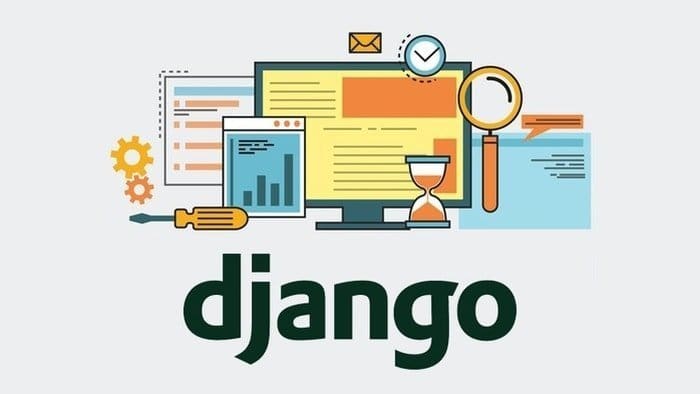 Django is one of the full stack free open source Python Frameworks with high efficiency of composing complex code. The enormity of the array of libraries and underscores effectiveness, less necessity of time for coding -all of these immense features make this framework stand out.
Django is one of the full stack free open source Python Frameworks with high efficiency of composing complex code. The enormity of the array of libraries and underscores effectiveness, less necessity of time for coding -all of these immense features make this framework stand out.
Highlights of Features
- Provides top-notch features that assist developers in achieving basic web development tasks: database authentication, URL routing, template engine, and database schema migrations, object rational mapper (ORM).
- Primary databases are PostgreSQL, MySQL, SQLite, and Oracle, and Django incorporates them.
- Offers inbuilt security features given by cross-site scripting, clickjacking, and with the help of this framework, developers can manage a sudden spike in traffic.
- It supports the model- view -template (MVT) structural pattern, and this framework is functioned by DSF, an independent nonprofit organization.
2. TurboGears
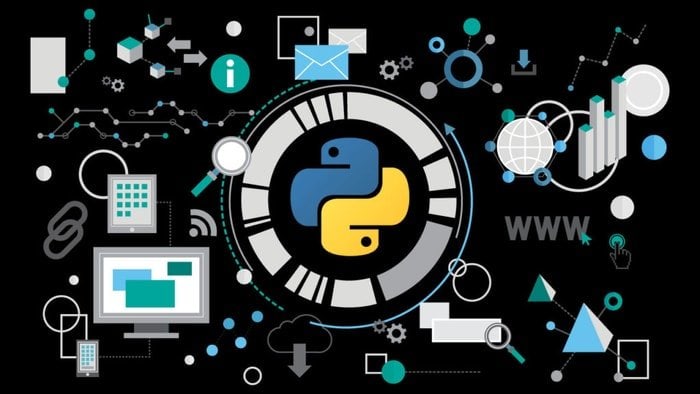 Another open source, full-stack, data-driven web application framework built from best-of-breed elements is TurboGears. It permits the developers to develop critical and elaborate data-driven web applications. The specialty of it – people can quickly create applications that require database connectivity with the help of WebOb, SQLAlchemy, Genshi, Repoze.
Another open source, full-stack, data-driven web application framework built from best-of-breed elements is TurboGears. It permits the developers to develop critical and elaborate data-driven web applications. The specialty of it – people can quickly create applications that require database connectivity with the help of WebOb, SQLAlchemy, Genshi, Repoze.
Highlights of Features
- Pursues an MVC – style architecture and integrates large formats, an impressive Object Relational Mapper (ORM), and Ajax for the server and program.
- Web servers like Pylon are being supported.
- Enables web developers to intensify the standard of work by using JavaScript development tools.
3. Tornado
The utilization of non -blocking network I/O, dealing with 10,000 + simultaneous connections – Tornado is setting its bar high as an offbeat web framework library. FriendFeed developed it, and Facebook gained this company in 2009. The developers were Ben Darnell, Bret Taylor.
Highlights of Features
- Permits the developers to discharge third-party authentication and authorization strategy such as Google, Facebook login, Yahoo BBAuth, Twitter OAuth, etc.
- It offers a Python-based web templating language.
- Supports translation and localization.
- The license was – Apache license 2.0
4. Web2py
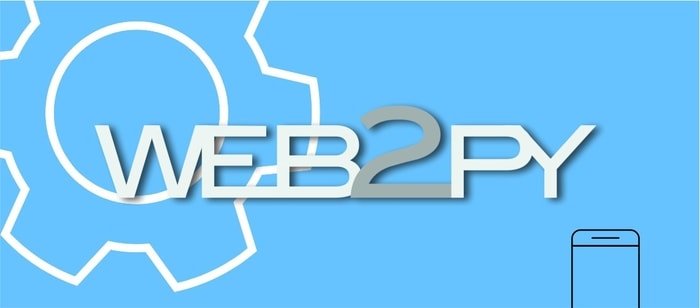 The scalability of an open source full-stack framework, the ability to debug, one-click deployment- all of these are the features of Web2py. It has a cross-platform web application framework, code editor feature, maintenance ability of application, ticketing system of figuring out of error.
The scalability of an open source full-stack framework, the ability to debug, one-click deployment- all of these are the features of Web2py. It has a cross-platform web application framework, code editor feature, maintenance ability of application, ticketing system of figuring out of error.
Highlights of Features
- Cross-platform of Web2py supports Windows, Linux, Mac, Google App Engine, and many other platforms.
- The built-in structure maintains HTTP responses, cookies, sessions.
- The programmer can modify the web application’s efficiency by web browsers.
- It provides security from cross-site scripting, injection faults and also assists in the execution of MVC programming. It also underpins internationalization.
5. Zope
Zope is an object-oriented web application development platform that can intensify its performance according to their need through Python code. Zope is the abbreviation of ‘ Z Object Publishing Environment, ‘It is the first attempt of object publishing methodology for the website. It helps python to earn fame.
Highlights of Features
- According to business needs, it can be customized its web applications.
- Underpins the versions of Python programming languages like 2.0 and 3.0.
- Developers can be benefited from page templates based on Chameleon, and the performance rate will be upsurge by minimizing memory utilization.
- Standard HTML editors can customize it.
6. Grok
Depending on Zope libraries, the Grok framework has been designed to give a template to concentrate on protocol over configuration and DRY( Don’t Repeat Yourself). Developers can choose the framework pattern following the need. It was invented mainly for the growth of Zope 3.
Highlights of Features
- An open source framework to enhance the development process.
- Its user interface is like other full-stack frameworks.
- Provides assistance to create a customized web application and generates the projection of development benefits by availing views, content, and controller.
- Its core technology (Martian,grokcore, component) is upsurging.
7. CherryPy
A deliberately simple yet effective object-oriented program is CherryPy. It is a standalone Python application that is a multi-linked web server. You can operate a CherryPy app behind Apache and Lighttpd or IIS as well. It is capable of using any templating technology, data access, etc.
Highlights of Features
- The built-in features support profiling, reporting, and testing, and it enables you to use any template according to your desire.
- Has an HTTP/1.1 -compliant WSGI thread pooled server
- A powerful configuration and flexible plugin make it outstanding
- This framework can operate on Python2.7+, Python 3.1+, Android.
- The caching, encoding, authentication, static content can be done by this tool.
8. Flask
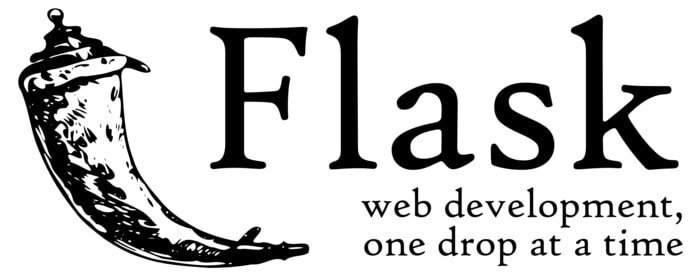 A microframework that doesn’t have specific tools and libraries and database abstraction layer is the Flask framework. It depends on the Werkzeug WSGI and Jinja2template. It is not only helpful for backend frameworks but also the open-ended applications.
A microframework that doesn’t have specific tools and libraries and database abstraction layer is the Flask framework. It depends on the Werkzeug WSGI and Jinja2template. It is not only helpful for backend frameworks but also the open-ended applications.
Highlights of Features
- Big companies like LinkedIn and Pinterest have used Flask.
- This python web framework supports Google App Engine and in-built unit testing and has a development server.
- Moreover, it is available under the BSD license, and its lightweight and modular design make it compatible for developers.
- More characteristics are – Unicode based, the capability of plugging in any ORM, HTTP request handling, RESTful request dispatching.
9. Quixote
Quixote is a web-based framework application of python, which is noted for its flexibility and high performance. The three versions 1,2,3 which are opposite yet used by numerous public sites. Here the traditional techniques get more important. Here, version 3 needs python 3 to operate, but version 3 is similar to version 2.
Highlights of Features
- Like Flask framework, it uses two libraries – Jinja2template and Werkzeug WSGI.
- Also, an open source framework.
- There is a demo of Quixote distribution.
- A developers’ robust framework doesn’t bother you when you are operating the framework in your style.
10. Bottle
A fast WSGI microframework underpins the Python Standard Library and can code, which gets the developer closer to the metal than other frameworks is Bottle. Marcel Hellkemp develops it. It works by creating a single source file of every development. It was designed for building web APIs.
Highlights of Features
- Has unique characteristics of routing, templating, utilities, and a fundamental abstraction over the WSGI standard
- Functions like mapping, gaining neat and dynamic URLs, all of these works are under routing.
- To format Web Interfaces( WI) of Netflix, developers use Bottle.
- A global list of search -paths(bottle. TEMPLATE _PATH) is consumed by Bottle to discover templates on the file system.
11. Sanic
A Python Web Framework experimented to find out the potentiality, and the statistics show that this particular web framework can process 33,342 requests in a second. And it was Sanic. It is built on uvloop and works according to HTTP responses that follow asynchronous request handlers. And thus make it fit for Python 3.5’s await functions.
Highlights of Features
- This Python Web Framework is comparatively more uncomplicated for its speed, nonblocking capabilities.
- Also, an open source python framework.
- Sanic underpins the version pythone3.5+
- Similar to Flask in tasking but more rapid.
12. Pyramid
Pyramid emphasized checking, directing, forming vast web applications, prototyping of ideas. The pyramid is used not only for easy jobs but also for difficult ones. By using a pyramid, it can lessen the complexity of web applications. You can go a long way in learning programming by using this framework. Pyramid adorns the app with many features.
Highlights of Features
- The built-in feature of the Pyramid suggests what to do or not.
- The Pyramid developers are equipped with the lucrative feature of Python-like function decorators.
- The scalability feature is unique in it.
- Has the capability of flexible authentication and authorization.
- More unique features – renderers; URL generation; predicates.
13. Dash
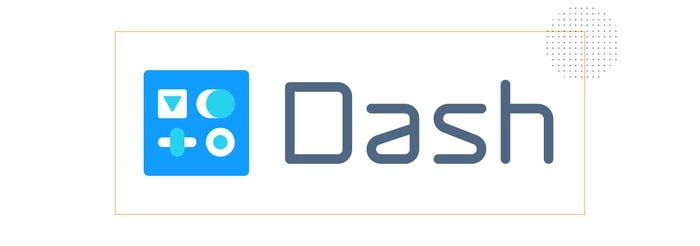 A web framework for the novice who is not very familiar with web applications can use this open source framework named Dash. It is mainly appropriate for building analytical web applications. Dash web developers can run Flask and communicate with JSON packets over HTTP requests. It is also an open source framework.
A web framework for the novice who is not very familiar with web applications can use this open source framework named Dash. It is mainly appropriate for building analytical web applications. Dash web developers can run Flask and communicate with JSON packets over HTTP requests. It is also an open source framework.
Highlights of Features
- Applications developed with Dash can be located on servers.
- To enhance the competence of Dash, developers can utilize the set of Flask Plugins.
- The developments are inherently cross -platforms.
- It can incorporate with React.js.
14. CubicWeb
A web framework that maneuvers the cube in place of using separate views and architectures and then affixes them to create an illustration with the help of some servers, files, databases. Thus for these characteristics, it is named after CubicWeb. Logilab develops it. This framework is established in the data model.
Highlights of Features
- There is validation, reusable components, numerous databases.
- This framework underpins Web Ontology Language (OWL).
- It also supports the Resource Description Framework.
- Fixed with Relational Query Language (RQL), so that simplify any doubts.
15. Divmod Nevow
Divmod Nevow is a French word pronounced as ‘nouveau.’ It is a web framework under python. The motto behind its design is to logic rather than other unnecessary elements. It is facilitated by a Python XML expression syntax named stan. It provides facilities for edited templates by XML attribute language. It also associates with Formless.
Highlights of Features
- Maintains the XHTML templates, which have only nodes with nevow aspect.
- Precisely distinguishes the data according to presentation and writing.
- Includes Athena, which is a cross-browser JavaScript library.
- Does the validation.
16. BlueBream
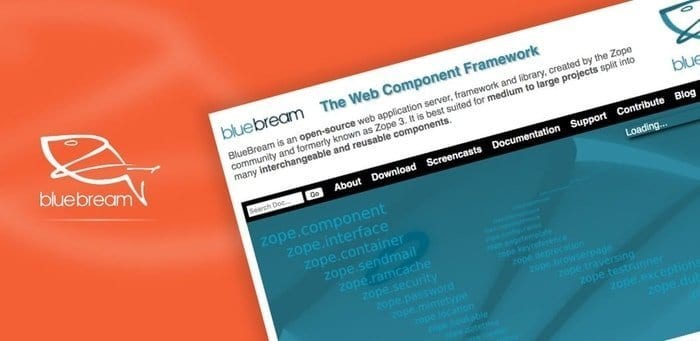 An open source framework owned by Zope Foundation and licensed under Zope Public License is known as BlueBream. The scalability feature makes it outstanding. It is presently known as Zope3. This framework is convenient for not only medium developments but also large ones. And again, it has elements of reusable and interchangeable.
An open source framework owned by Zope Foundation and licensed under Zope Public License is known as BlueBream. The scalability feature makes it outstanding. It is presently known as Zope3. This framework is convenient for not only medium developments but also large ones. And again, it has elements of reusable and interchangeable.
Highlights of Features
- Built on top of the Zope Toolkit (ZTK), which makes it more efficient.
- Follows the Buildout building system of Python
- BlueBream uses the feature named Zope Component Architecture which applies Separation of concerns to make reusable components.
- BlueBream works with the Zope Object Database( ZODB) to increases determination.
17. Giotto
Giotto is a python web framework. And it was founded based on the MVC ( Model View Controller) architecture. It distinguishes the writing elements and structural elements. That means it separates Model, View, and Controller to guarantee the developers and system administrators work efficiently.
Highlights of Features
- Extremely terse code is one of the features. There is a featured blog application of 300 lines.
- Free RESTful WI with “browser POST” CRUD site.
- Has automatic URL routing.
- Supports Jinja2 library for HTML templates.
- Generic views and models and plugin controllers -all there make Giotto phenomenal.
18. Pylon
A considerable and recommended web application is one of the Python web frameworks known as Pylon. It is a rapid and subtle web framework. It is the amalgamation of best ideas from programming languages such as Ruby, Perl, and Python. It lessens the complexity of the development. The developers behind it – Ben Bangert, James Gardner.
Highlights of Features
- Its operating system is cross-platform and has a BSD license.
- There is a massive consumer of the Web Server Gateway Interface to separate different modules.
- The structure is a near-complete stack of third-party tools.
- The installation method is through EasyInstall via PyPI, and the additional tools are installed similarly.
19. Falcon
Falcon is a microframework that is used for both large and medium applications. It is applicable for higher-level frameworks, quick backend works, or any intricate works. It has an accessible entrance to headers and bodies through request and response classes. It supports the WSGI library for building. People call it Dieter Rams of the web application.
Highlights of Features
- Falcon cuts the unnecessary threads of the architectural site and collaborates HTTP with a clean design.
- A REST-inspired mapping of URIs to resources.
- Underpins full Unicode.
- Cooperates well with async libraries like gevent.
- Supports PyPy.
20. Bobo
 A lightweight framework is founded to develop various applications and clings to WSGI is known as Bobo. The motto behind its formation is to have flexibility, amusement in the time of working. The significant aspects of this framework are to map URLs to objects and call objects to gain HTTP response.
A lightweight framework is founded to develop various applications and clings to WSGI is known as Bobo. The motto behind its formation is to have flexibility, amusement in the time of working. The significant aspects of this framework are to map URLs to objects and call objects to gain HTTP response.
Highlights of Features
- There are hard and fast rules of doing work effectively by this microframework.
- It doesn’t have the templating engine like other full-stack frameworks.
- Its subtle configuration is the shinning part of it.
- The most important task of this framework is to send a response and gather data.
21. Web.py
Two many cooks spoil the broth.
It is the strategy of a python web framework named Web.py. It is less complicated and better to work with. In the amateur stage, it could also be found well-built applications. Aaron Swartz invented it in 2006. He has been taking initiatives for the betterment of this framework.
Highlights of Features
- Web.py incorporates Yandex, the largest Russian search engine and Local.ch, and a telephone directory in Switzerland.
- It is developer-friendly.
- Distinguishes requests from POST and GET.
- Underpins a REST API.
22. Muffin
The framework named Muffin was invented in 2015 when the aiohttp stack was newly made and small. It was the outcome of altogether of required tools like plugins system, admin interfaces, REST API. It is convenient for small projects. It is a fast, asynchronous, and straightforward web application that is applicable for python 3.
Highlights of Features
- It is built on top of the asyncio module in the Python 3.4+ standard library.
- Muffin takes the essence from Flask with URL routes.
- Here, the PeeWee ORM is used as a replacement for SQLAIchemy ORM.
Get Muffin
23. Ray
It is quite familiar to Falcon. It is used for building RESTful APIs. There, validation and built-in authentication happen. Adding endpoint address, you can get HTTP architecture. By using a hook, you can do the validation. It can validate at every stage of the application.
Highlights of Features
- Endpoint underpins query string to the GET method.
- Here to use the authentication module, you need to inherit the class and apply the method.
- Uses Shields to protect HTTP methods.
- Its features are almost familiar to the backend servers.
24. Vibora
Vibora is known to the developers as a sophisticated Python 3.6+ HTTP client framework. It means viper in Portuguese. This framework is designed from top to bottom as an efficient framework. It is the amalgamation of numerous libraries -jinja2, marshmallow, WebSockets, etc. The web APIs are often IO-based, which makes the Vibora stand out.
Highlights of Features
- Follows domain-based routes.
- Some remarkable server features – Streaming, caching tools, Async Template Engine.
- Has the strength of customization.
- Sessions with cookies persistence.
- Has transparent content decoding, which is client-friendly.
Get Vibora
25. WebCore
WebCore is a nano framework that reflects ten years of Web development experience. It separates the model, view, controller. The source line is less than 400 lines. It is easy to access, adapt and operate. It is not time-consuming; instead, it helps programmers to do work quickly. The application reflects the standard python WSGI application.
Highlights of Features
- Installation of WebCore is quite not a tedious job.
- WebCore depends on the webob package for sending requests, then the response, HTTP coding.
- Development happens on GitHub in the WebCore project.
- Callable endpoints are the method to make requests and respond if any abnormality happens.
Final Words
There goes a saying –‘ Many man, many minds’.
Which framework are you going to choose for your next project?? This certainly depends on the objective of that particular work and also on the developers. Every structure has its right kinds of stuff and drawbacks as well. The more the framework updates, the more you have to be technologically equipped.
So day after day, the coding style, the preferences, the efficiency of the applications -all of these are changing. To keep pace with the development of the software world, we have to be updated about these.
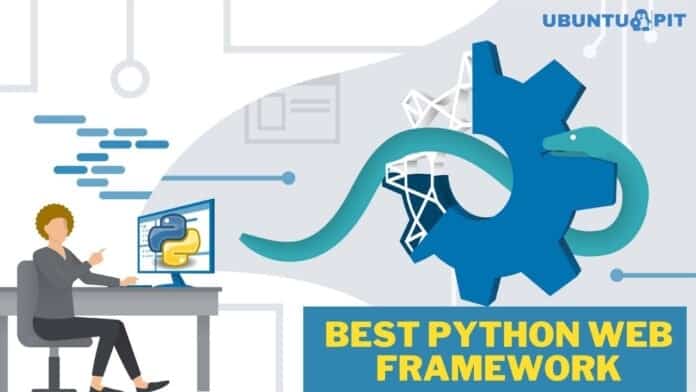
Awesome! Thanks for sharing the knowledge and keep posting more.